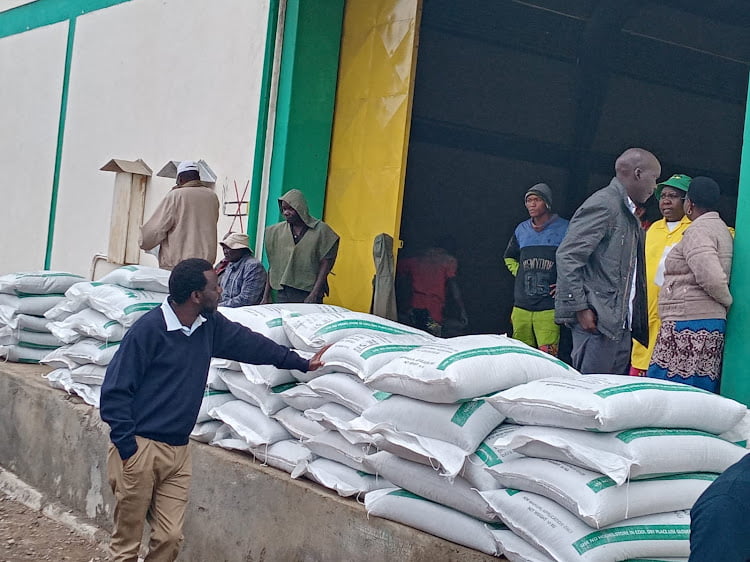Global Fertilizer Markets Respond to Surging Energy Prices

Photo: Farmers collect subsidized fertilizer at the NCPB depot in Eldoret in 2022 © Mathews Ndanyi
As the world contends with surging oil and natural gas prices, the global fertilizer markets have been experiencing a notable uptick in recent weeks, with consequences rippling across the agriculture industry. This development, while concerning, is not isolated, as it mirrors trends observed in the agricultural sector on a global scale.
The global price of ammonium nitrate per ton climbed in August, marking a significant price increase from the previous month. While this price hike may raise eyebrows, it is important to note that it remains significantly lower than the levels witnessed at the same time last year, which saw the introduction of subsidized fertilizer prices in September 2022 by the Kenyan government in response to the evolving dynamics of the global fertilizer market, providing a semblance of relief for farmers and growers.
Natural gas, a key component in fertilizer production, commands a significant share of the total production cost. In August 2023, natural gas prices sharply rose, and although they have since dipped slightly in early September, they remain above July levels. This natural gas price volatility has worsened the situation.
The Energy and Petroleum Regulatory Authority (EPRA) in Kenya released the maximum retail prices for petroleum products that will be effective from September 15, 2023, to October 14, 2023. These new prices, calculated in accordance with the Petroleum Act 2019 and Legal Notice No. 192 of 2022, reflect changes in the global oil market and other economic factors. The price changes in Kenya have since taken effect, with Super Petrol, Diesel, and Kerosene increasing by KES 16.96 per liter, KES 21.32 per liter, and KES 33.13 per liter, respectively.
The soaring prices of crude oil and related products are exerting additional pressure on the fertilizer market. These developments demonstrate the industry’s vulnerability to external economic factors.
READ: Why the Increased Pump Prices Could Push Fertilizer Costs Upwards In The Long Run
To complicate matters further, the global supply of fertilizers has tightened due to reduced export volumes from China and decreased production within the European Union. In Europe, production cuts in Belgium, as well as lingering disruptions, have compounded the issue. These factors have created a challenging environment for both suppliers and growers alike.
The global tightness in supply is the primary reason behind the recent price hike and production cuts in Europe, particularly in Belgium, and geopolitical factors, such as Russia’s influence, are all contributors to the market’s volatility.
Globally, gas prices have retreated from their peak levels of the previous year, but they remain comparatively high. The geopolitical landscape, particularly sanctions impacting Russian fertilizer exports, has disrupted the historical flow of products across Eastern and Western Europe.
Additionally, China’s decision to reduce fertilizer exports in favor of bolstering domestic production has added to the supply challenge. These developments reverberate not only in Kenya but also across the global agriculture sector, where the interconnectedness of markets is increasingly evident.
Despite the challenges and price fluctuations, some traders in Kenya suggest that there is still an ample supply of fertilizers. However, market dynamics can shift rapidly, and a resurgence in grain prices may trigger increased demand for fertilizers in the coming weeks.
READ: Kenya’s Agriculture Sector Confronts Surging Interest Rates



